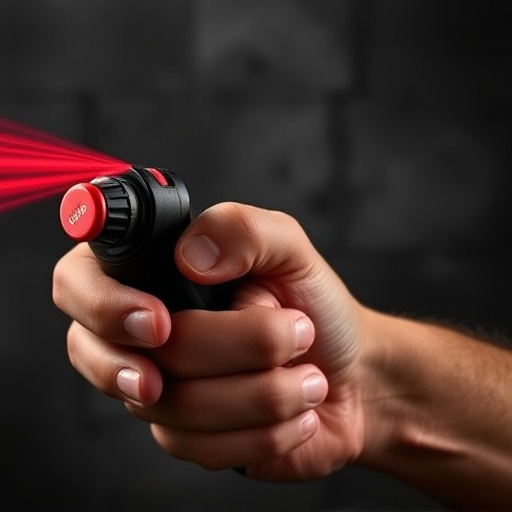Bear spray, containing capsaicin like hot peppers, disrupts bears' respiratory systems, causing coughing and irritation upon direct spraying into their faces from safe distance. Key attack signals like huffing or charging indicate imminent threat, warranting immediate use of pepper spray to deter the bear long enough to retreat to safety. Post-spray care involves thorough washing for 15 minutes, seeking medical attention for severe reactions, and remaining calm until help arrives.
In bear country, knowing how to defend yourself against unexpected attacks is crucial. One effective tool that has gained popularity is bear spray—a potent pepper spray designed to deter aggressive bears. This article equips you with essential knowledge on using bear spray and provides immediate care guidelines after an encounter. Learn about the effectiveness of this defense mechanism, recognize attack signals, and understand the steps for safety and recovery following a bear spray incident.
- Understanding Bear Spray: What It Is and How It Works
- When to Use Bear Spray: Recognizing Attack Signals
- Immediate Care After a Bear Spray Incident: Steps for Safety and Recovery
Understanding Bear Spray: What It Is and How It Works
Bear spray, also known as pepper spray specifically designed for outdoor use, is a powerful deterrent against bear attacks. It’s an immediate care solution that works by causing temporary blindness and severe irritation to the bear’s eyes, nose, mouth, and lungs. This disruption creates a chance to escape or reassess the situation without sustaining serious injuries.
The active ingredient in bear spray is capsaicin, similar to what’s found in hot peppers. When sprayed, it irritates the animal’s respiratory system and sensitizes nerve endings, leading to coughing, sneezing, and difficulty breathing. Proper usage involves spraying directly into the bear’s face from a safe distance, ensuring the wind is blowing away from you to maximize effectiveness and minimize exposure. Immediate care after use includes thorough washing of affected areas and seeking medical attention if necessary.
When to Use Bear Spray: Recognizing Attack Signals
When faced with a potential bear attack, knowing when to deploy bear spray is crucial for your immediate safety. Bear spray should be used as a last resort when an attack seems imminent. Recognizing attack signals from the bear is key. These can include huffing, jaw-popping, charge, or swatting at the ground—behaviors indicating the bear feels threatened and is preparing to defend itself.
If you find yourself in close proximity to a bear displaying these signs, it’s time for immediate care with your bear spray. Aim for the bear’s face and eyes, creating a barrier between you and the potential attacker. This strategic use of pepper spray can deter the bear long enough for you to retreat to safety, providing a vital window of protection in potentially life-threatening situations.
Immediate Care After a Bear Spray Incident: Steps for Safety and Recovery
After a bear spray incident, immediate care is crucial for safety and recovery. If you’ve been sprayed, take a moment to assess your situation. Remove any contaminated clothing or shoes immediately, taking care not to rub the affected area which can worsen irritation. Rinse the affected skin with plenty of water for at least 15 minutes to dilute the pepper spray residue.
Seek medical attention as soon as possible, even if symptoms seem mild. Pepper spray can cause severe eye irritation, breathing difficulties, and skin burns. A healthcare professional can provide necessary treatment, prescribe medications, and offer guidance on managing discomfort. Until help arrives, try to remain calm, move to a safe location away from potential bear activity, and avoid any further exposure to the spray.
Bear spray is a valuable tool for defending against animal attacks, especially in areas known for bear populations. Understanding its composition, usage, and immediate care after exposure can significantly improve safety outcomes. By recognizing attack signals and knowing when to deploy bear spray, individuals can effectively deter and defend against potential threats. Remember, proper training and preparation are key; practice using bear spray safely and familiarize yourself with local guidelines for a more secure outdoor experience.
